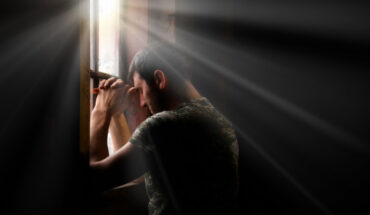Spinal injuries can be extremely worrying, so it is vital to know what to do should you be the first at the scene of an accident and suspect someone may have injured their spine. It is rare for someone to have suffered a spinal injury, but it is always best to be extra cautious, as it is possible to have broken your back or neck and not be aware of this until it is x-rayed. It is incredibly important to keep the spine in line and avoid them twisting. If someone has a damaged spinal column (bones) and twists, it can damage the spinal cord and result in paralysis.
If you are able to remain calm and follow the steps outlined below, it should prevent additional damage occurring to their spinal cord.
Consider that someone may have a spinal injury if they have:
- Fallen a distance more than twice their height
- Been pushed with force
- Had something heavy has fall onto them
- Been involved in a road traffic accident – either within a moving vehicle or being hit by anything at speed, particularly if it is over 15 mph
- Been doing any form of combat or contact sport
- A head injury
- Complained of severe neck or back pain
- Won’t/can’t move their neck
- They feel weak, numb or paralysed or have any form of hand, foot or motor weakness
- They have lost control of their limbs, bladder or bowel
- Their neck or back is twisted or positioned oddly
- A collapsed rugby scrum
- Dived into a shallow pool and hit the bottom
The NICE guidance on spinal injury also includes that spinal injury should be considered in conjunction with the known mechanism of injury, for anyone who is/has
- under the influence of drugs or alcohol
- confused or uncooperative
- a reduced level of consciousness
- any spinal pain
- any hand or foot weakness (motor assessment)
- altered or absent sensation in the hands or feet (sensory assessment)
- priapism (unconscious or exposed male)
- a history of past spinal problems, including previous spinal surgery or conditions that predispose to instability of the spine.
The steps to follow:
- Firstly – Get help as quickly as possible. Call an ambulance immediately, stating that you think the casualty has a spinal injury.
- If they are conscious, encourage them to remain completely still. You can help support their head, keeping it in place, but do not restrain them. The most important thing is that you want to avoid them twisting.
- Keep any helmets on. If the person is wearing a helmet, don’t remove it, as this could make any spinal injury worse.
- If the person shows no signs of life, begin CPR. However, if trained to do so, modified CPR can enable you to resuscitate, whilst protecting the spine. Do not tilt the head back to open the airway. Instead, use your fingers to gently grasp the jaw and lift it forward. If the person has no pulse, begin chest compressions (this is advice from the Mayo Clinic)
- If they are unresponsive and still breathing normally, you will need to very carefully put them into the recovery position, ideally by log-rolling.
Log-rolling someone into the recovery position
- To assess their level of consciousness, first speak to them. Shout assertively and clearly, tell them who you are and ask if they are okay. If there is no response, pinch their ears, nail bed or squeeze their shoulders. You want to give them a sharp, painful stimulus to see if they are alive or not. If you don’t get a response when you pinch one ear, pinch the other, in case they have a weakness down one side. If you get a response, you know they are alive and breathing.
- If there is no response and they are breathing, (unless you have had advanced training on MILS and recognition of early airway obstruction) they need to be put into the recovery position quickly and carefully. This should not possible to do alone, so make sure you have others to help you.
- If there are just two people, one should support the head and co-ordinate between you, rolling together whilst the other uses the recognised recovery position technique to roll them into the recovery position. Link to Recovery Position
- If you are on your own and are seriously worried that their airway is obstructing, they should be rolled into the recovery position straight away. Use their arm to support their head and neck – it is not as supportive to their neck as a log roll technique, but protecting their airway is of vital importance as if they are not breathing they will die.
- Support their head and neck in line with the body while you assess their level of consciousness. Do not cover their ears, as hearing is the last sense to go and the first to come back.
- Get someone to phone for an ambulance.
- To check if they are breathing, put your cheek above their mouth and nose; look down their body, listen to their breathing and feel their breath on your cheek.
- Keep supporting their head and neck. Very carefully straighten their limbs and quickly prepare to log roll them into the recovery position. Check the pocket on the side that you are rolling them onto is empty.
- The second person should position themselves at the shoulders and be ready to roll the casualty towards them.
- The third person should position themselves in the middle of the body and overlap hands to thoroughly support the casualty’s body.
- The fourth person supports the legs. They need to gutter the leg supporting underneath, so that when the casualty is rolled over they remain completely straight.
- Check everyone is ready. The person holding the head should take charge. On the count of 3, everyone rolls together keeping the spine in line.
- Check the casualty is over enough to keep the airway open and allow the contents of their stomach to drain. Keep supporting the head. Do not let go until a paramedic takes over. The other people should continue to support the lower part of the body. Keep monitoring their breathing continually.
- What is a seizure? - 13th March 2025
- Febrile Convulsions and Seizures in Children - 13th March 2025
- Why women are less likely to receive CPR or survive cardiac arrest - 6th March 2025












